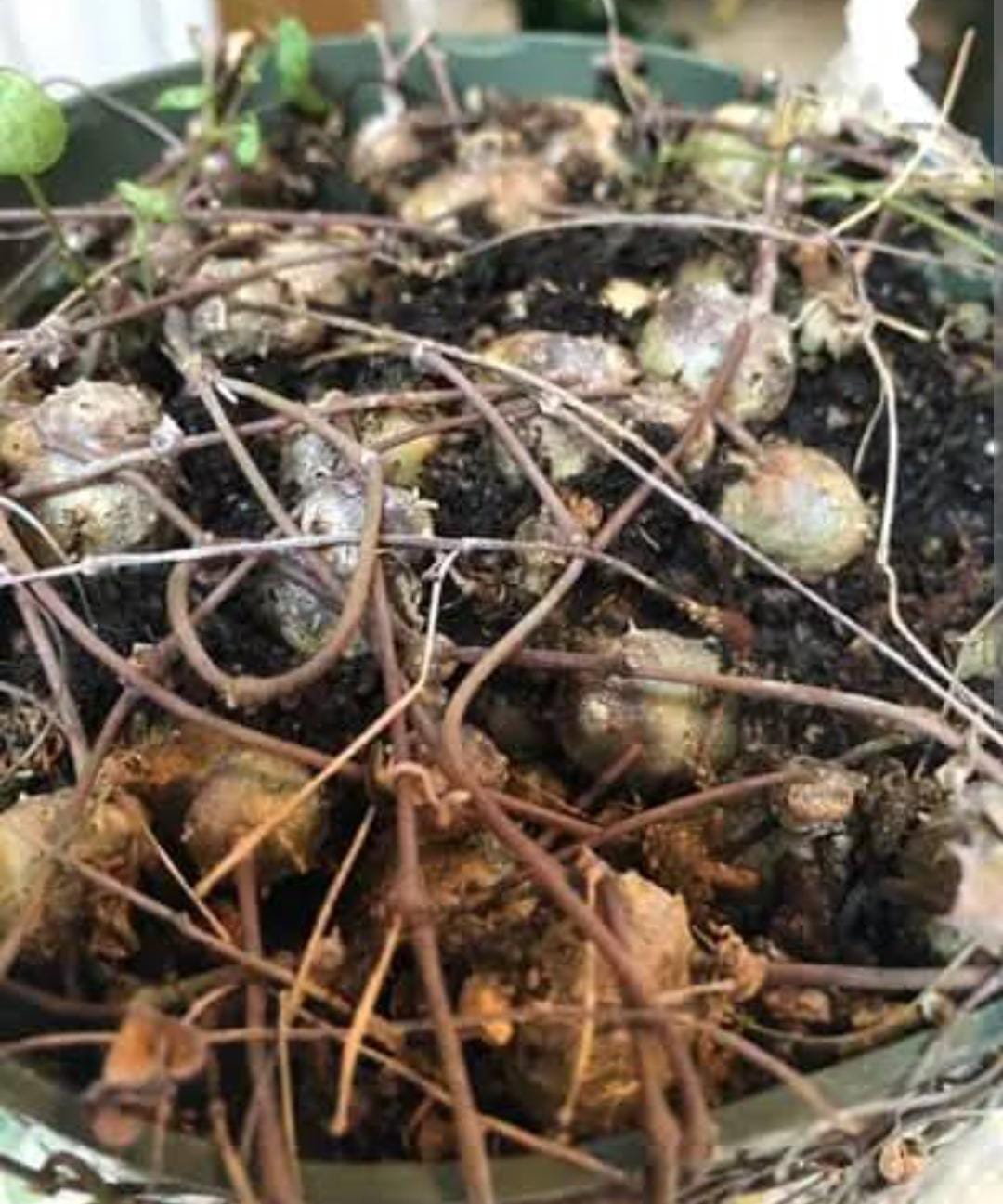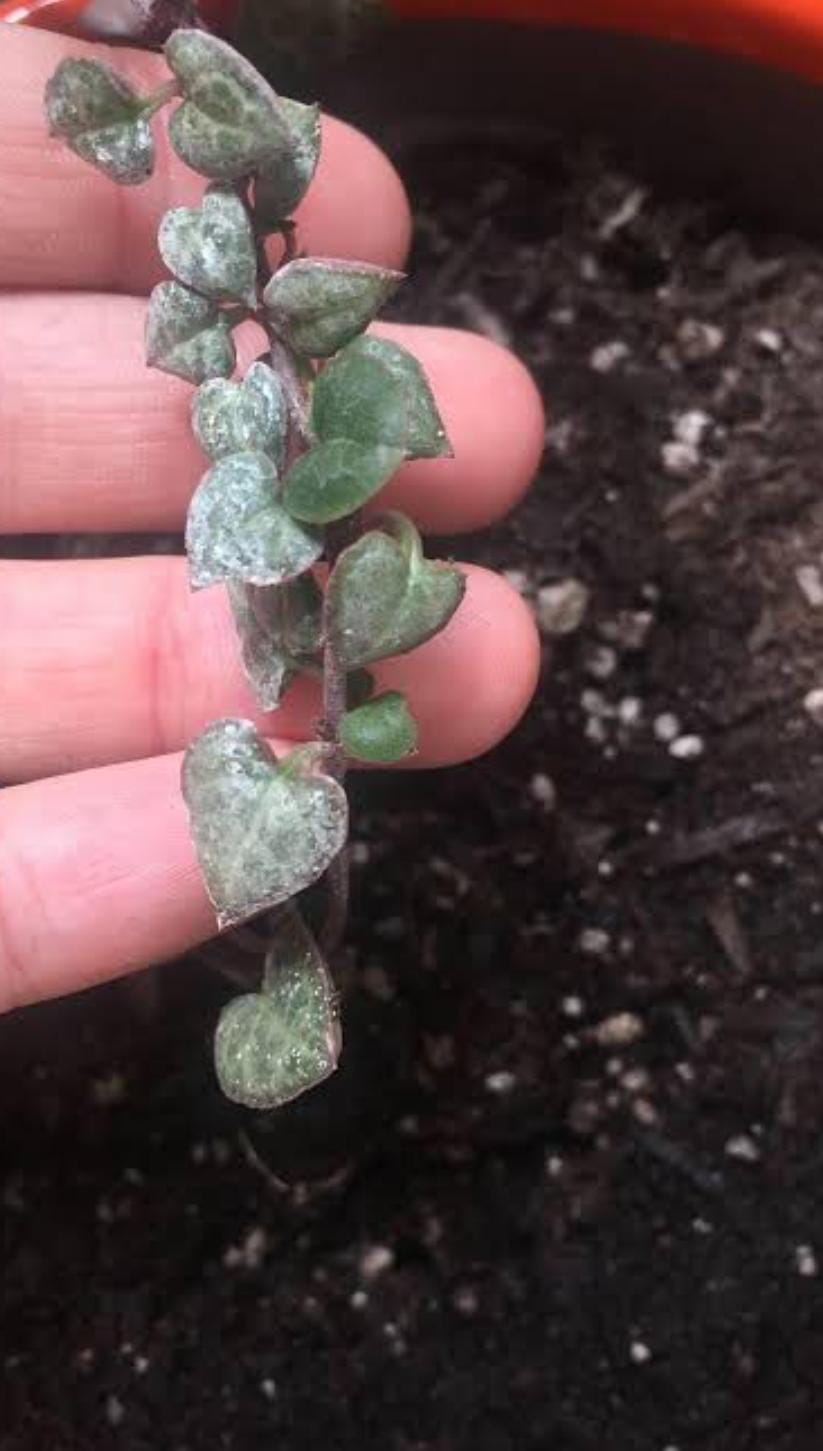String of Hearts hanging Plant
Tangle Heart (Ceropegia woodii), also known as String of Hearts, is a trailing succulent often grown in hanging baskets. Plant in well-draining soil and provide bright, indirect light. Allow the soil to partially dry between waterings. Pruning can be done to control the length and promote a fuller appearance.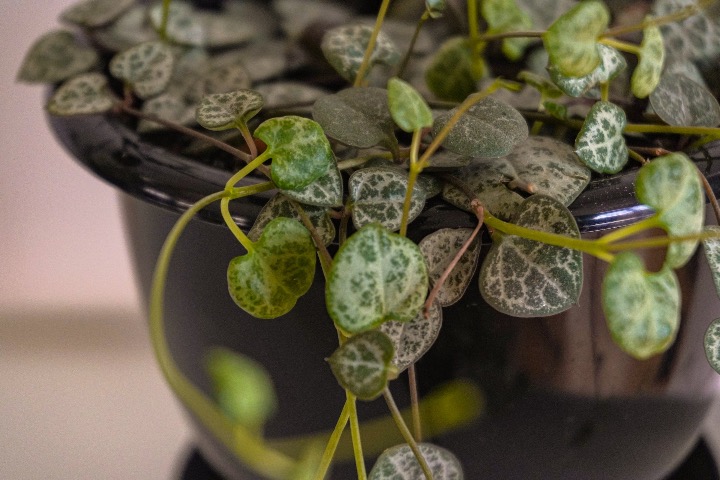
Habit
Vine
Height
0.3-0.5 m
Growth
Fast
Soil
Well Drained, sandy
Shade
Low to bright indirect light
Moisture
Low to bright indirect light
Edible
No
Medicinal
No
Origin
South Africa
Climatic Condition
Tropical, Subtropical
Temperature (°)
18-24°C
Humidity (%)
40-60%
Potting media
Cactus mix
Fertilizers
Balanced, organic NPK
Watering
Light watering
Plant Weight
50-100 g
Flowering Time
Spring, Summer
Soil Ph level
6.0 - 7.0
Water Ph level
6.0 - 7.0
Soil EC
1-2 dS/m
Yield Per Plant
Ornamental, trailing vine
NPK ratio
10:10:10
life Span
Perennial
Health Benefits
Ornamental, air purifying
Suggested Grow Media or Potting Mix ?
50% perlite, 30% potting soil, 20% coarse sand
Suggested Fertigation/Fertilizers
50% perlite, 30% potting soil, 20% coarse sand
Common Diseases and Remedies
Root rot , Powdery mildew
Stunted growth, white patches on leaves
neem oil
HEALTH BENEFITS
· Used in traditional medicine for wound healing and skin care.
· Has mild anti-inflammatory properties.
What Is The String Of Hearts Hanging?
Ceropegia is a genus of plants in the Apocynaceae family, native to Africa, South Asia, and Australia. The name comes from Carl Linnaeus, who first described this genus in his book Genera plantarum, published in 1737.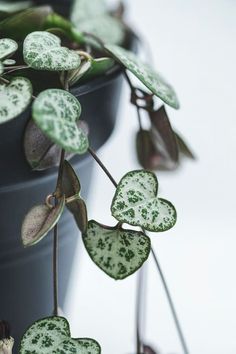
What Are The Different Types Of String Of Hearts Hanging
1. Ceropegia woodii variegata (variegated heart string):
One of the most unique varieties is the variegated heart string. The leaves are similar in shape and feel to the common C. woodii, with silver markings and beautiful pink and cream variegated leaves. The purple hue of the stems adds an extra element of beauty, and the brighter the plant is placed in, the stronger the pink hue of the Silver Glory Heart Necklace Collection.
2. Ceropegia woodii 'Heartless' (String of Spades):
String of Spades, also known as C. woodii 'Heartless', 'Durban' or 'Minister'. There are some similarities in look and feel to the original String of Hearts, but there are also some differences. The actual leaves are bright green with even brighter green spots, and the underside is not burgundy, but rather has a very bright pink stem.
3. Ceropegia Linearis (Conifer):
Conifer is one of the showy ornamental plants due to the unique shape of its delicate leaves. With narrow, long, spotted green leaves resembling needles, it is clear what the inspiration for its name was. For these guys, the more bountiful they keep their plants, the better off they will be as this will encourage a beautiful cascade of conifers over time.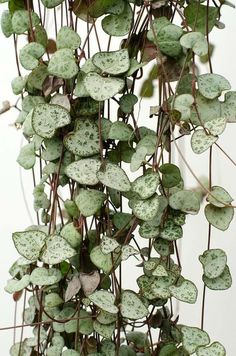
How To Care For String Of Hearts Hanging
Location
String of Hearts (Ceropegia woodii) is a hanging ornamental plant with heart-shaped gray leaves with an attractive mottled pattern and pink underside. In summer, it blooms pink cylindrical flowers. String of Hearts is a succulent plant that is native to South Africa.
Sunshine
String of Hearts prefers bright indirect light. String of Hearts cannot survive in low light and its leaves will burn if exposed to direct sunlight. Bright indirect light will make the leaf colors more vibrant. If there are large gaps between the leaves, there may not be enough light reaching the heart strings.
Soil
Heart plants grow best in well-drained cactus potting soil. It is prized for its ability to reproduce, but too much of it can make the plant look stringy. When using regular potting soil, additives such as pumice or perlite are required to ensure proper drainage.
Hydration
Water your String of Hearts generously once a week, or during the growing season when the top 2 to 3 inches of soil is completely dry. Another way to ensure your heart ring receives the amount of water it needs to thrive is to feed it with water from the bottom.

Issues
String of Hearts Ceropegia WoodiiImmersive. Improper watering is a common cause of curled succulent leaves. ...Too much water. ...Insufficient light. ...High temperatures or strong direct sunlight. ...Low humidity or dry air. ...Nutrient deficiencies, soil problems, or root fixation. ...Transplant shock. ...Pests and Diseases.
What Are The Benefits Of String Of Hearts Hanging
Low maintenance.
Resilience is String of Hearts' middle name.
Air purification.
Aesthetic appeal.
Various decorations.
Stress relief.
A symbol of love and longevity.
Healing and health.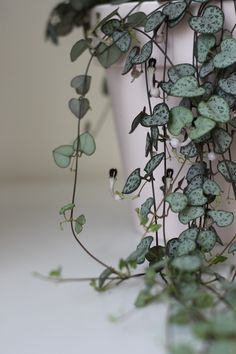
FAQs About Growing String Of Hearts Hanging
1. Does string of hearts purify the air?
String of hearts is a non-toxic plant. Additionally, it is a natural air purifier. Heart string is considered one of the easiest plants to propagate.
2. String of Hearts – a good houseplant?
This hanging succulent has delicate heart-shaped leaves that dangle gracefully from a hanging basket or shelf. Compact size, approximately 4 feet long. Perfect for small indoor gardens and terrariums. 12
3. Can I put a string of hearts in my bathroom?
"And when you look at it in bright light, it's the most beautiful deep pink-purple!" This heart necklace is warm and It's made for climates that aren't too humid, so you can forget about putting it near cold vents.
4. Where is the best place to put a heart necklace?
A little direct sunlight is fine, but too much direct sunlight can cause leaf burn. This plant is not suitable for low light environments.
5. Will the heart necklace grow if I cut it?
String of Hearts is easily propagated by cuttings, tubers at the base of the leaves, or seeds.


